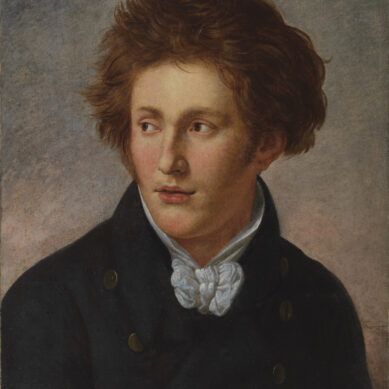You searched
Sculptor
Ernesto Biondi
Are you interested in the sales or the purchase of his artworks?
We buy works of this artist
and of other painters and sculptors from the 16th century to the first half of the 20th century
The Berardi gallery offers a free and without obligation service for evaluation of ancient and modern art . To find your way in the art market, very complex and full of nuances, it is better to rely on a professional consultant who can answer fast and concretely to your needs. The clarity of the answers will resolve effectively the need to estimate or sell an asset.
Contact us immediately without commitment
Answers also in 24 hours:
Ernesto Biondi
Ernesto Biondi
Biondi was born in Morolo, a small village in the province of Frosinone, and from an early age showed an artistic talent – he started drawing when he was very young and disliked the school environment in general. In 1870, when he was only 16, Biondi arrived in Rome to study art. Faced with financial difficulties, he lived with his uncle Don Pietro, chaplain of the church of Sant’Agnese in Piazza Navona. He earned his living in the most varied ways: wood inlays, stucco and terracotta works, illustrations – until he managed to enter the Accademia di San Luca in 1871. He was a pupil of Girolamo Masini and inherited some of his traits in his earliest works, such as the Mengozzi-Huber funerary monument at the Verano. Ernesto Biondi’s debut took place at the 1883 National Exhibition of Fine Arts in Rome, where he exhibited A Caravan, an Orientalist subject that was easy to interpret and popular on the market. His early production – characterised by an agile modelling and the choice of trivial themes ranging from Orientalism to genre scenes – was exhibited, together with the more demanding Death of Antigonus, at the Antwerp Exhibition of 1885, where he had a crucial meeting with the painter and merchant Vittore Grubicy de Dragon who immediately recognised in the sculptor that “semi-savage, exotic” (Grubicy 1891) trait and an exuberant and genuine talent. It was perhaps the strong friendship between the two – as demonstrated by a heartfelt correspondence – that led Biondi to develop a full stylistic and thematic maturity. The genre production and his work in the Neapolitan ceramics factory Schioppa and Cacciapuoti, towards the end of the 1890s, were combined with the investigation of realism in the style of Michetti, focused on social issues and the narration of the life of the poor – which was close to the style of Achille D’Orsi: “my villagers, whom before […] I did not even dignify with a glance” (Biondi 1887) appeared in the sculptures exhibited in Rome in 1893 and 1895, Poor Cola and Poor People. The latter won an award in Brussels and it is a “commemoration of misery” but also “the word of the artist, of the man […] who dreamt the sweet dream of human justice triumphing over everything and everyone: the dream of the purest socialism…” (Corradi 1917, p. 469). Shortly before, in 1891, at the National Exhibition in Palermo, he had sent Kisses and Caresses, a small and ironic bronze genre group depicting three pigs tenderly bringing their snouts together, immersed in mud – hence the playful title. This animalier subject represents a pleasant divertissement, a small amusing interlude of a guaranteed commercial success, created by Biondi during the Christmas festivities he spent in Morolo in 1890 and described in a letter to Grubicy as a “little group of pigs” (Biondi 1890). In those years he was already working on his absolute masterpiece: Saturnalia, a work presented at the Universal Exhibition in Paris in 1900 and awarded the Grand Prix, generating great international resonance and dividing the critics. A group of life-size figures – the result of ten years of work – that represent the upside-down world of the Saturnalia: an intelligent portrait of the decadence of Roman customs in the late empire, but also a summary of a “universal, eternal, human moment […] that is reflected and reverberates in our spirit from a distance”(Biondi 1899). A work that conveys “poetry, the complete expression of Art, true, eternal […]. The intense feverishness of the work […] the manifestation of striking thought” (Titan 1900, p. 165).
Elena Lago






